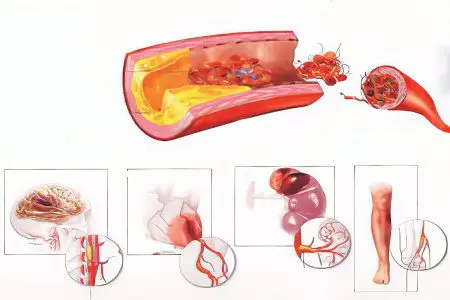Contents
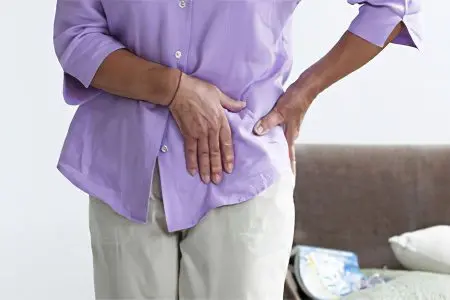
Hip pain can occur regardless of a person’s gender or age.
Pain in the hip is characteristic of pathological changes in the hip joint. If this is not a manifestation of any disease, then active physical activity may be the cause. Pain can be chronic or acute (recurring from time to time) course.
Most people go to the doctor only when the pain is no longer strong enough to endure. You should not do this, you should definitely consult a specialist if the pain persists for more than a few days, or occurs with a certain frequency.
What can hurt in the hip?
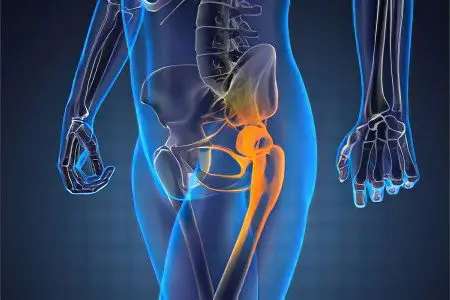
Pain occurs when the nerve fibers penetrating the thigh are affected. Through them, the pain impulse is transmitted to the spinal cord, and then to the brain.
Structures that can become inflamed in the thigh:
Components of the hip joint.
Thigh bones.
Periosteum.
Muscle fibres.
Tendons.
Skin covers.
Nerve plexuses and fibers.
Vessels.
The process of inflammation has a single pattern of development. The provoking factor leads to the fact that immune cells are activated. They gather in the pathological focus and direct all their efforts to neutralize it. These are cells such as: leukocytes, lymphocytes, histiocytes, etc.
Leukocytes in the focus of inflammation are destroyed, releasing serotonin, histamine and other biologically active substances. They contribute to the expansion of blood vessels and blood flow to the affected area. Veins and arteries are overfilled with blood, pressure increases in them, and throughput increases. Plasma sweats through the vessels, which causes swelling of the tissues.
Edema presses on the nerve fibers, which contributes to increased pain. Moreover, the nerve fibers themselves during this period are as sensitive as possible and react to irritation even more strongly. Therefore, even a slight touch to damaged tissues responds with pain.
What is hip pain like?

Depending on the cause of the pain, it can be acute, somatic, cutaneous, or neuropathic.
Acute pain most often occurs during an injury. A person can accurately indicate its location. Then the sharp pain becomes aching, which is a sign of the development of inflammation.
Somatic pain most often does not have a clear localization. A person can only point to the area in which it arises. Such pain develops when the soft and hard structures of the thigh are affected.
Skin pain lasts less than others. It develops due to the fact that the nerve endings that penetrate the dermis are damaged.
Neuropathic pain develops due to damage to nerve tissue. A person indicates that some part of his thigh hurts, but there is actually no inflammatory process there.
Causes of hip pain
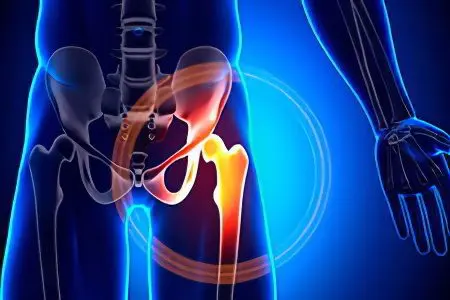
Pain can occur both in the thigh itself and radiate into it from other parts of the body. The following causes of hip pain are distinguished:
Pathology of the hip joint and femur.
They include:
Arthrosis of the hip joint. In this case, the cartilaginous tissue of the joint is destroyed, which leads to a narrowing of its gap, friction of the articular elements against each other and pain. They are especially intense during physical exertion.
Necrosis of the femoral head. Metabolic failures, deterioration of blood supply to tissues, etc. can provoke a violation. This process leads to the fact that the tissues of the femoral joint die off. Pain worries a person during movement, and then at rest.
Joint dysplasia. Young children suffer from this congenital pathology. Pain occurs during movement.
Epiphyseolysis of the femoral head. This disease debuts at the age of 11-14 years. The reason is hormonal imbalance. The strength of the bone tissue suffers, which leads to an incorrect arrangement of the articular surfaces relative to each other. The teenager begins to complain of pain while walking.
Fracture of the femur.
Dislocation of the hip.
Rheumatoid arthritis. This disease has an autoimmune nature, develops due to violations in the functioning of the body’s defenses. Cells that are supposed to fight pathogens begin to attack their own joints, which leads to their destruction. Pain in the hip increases with stress on the articular structures. Increases in the evening, and weakens in the morning. Small joints are affected first, and then the process spreads to large joints.
Rheumatism. The disease has an autoimmune nature, debuts after an infection caused by beta-hemolytic streptococcus. In rheumatism, the hip joint is often the first to be affected. In parallel with it, other large joints suffer.
Damage to the ligamentous apparatus or muscles of the thigh. This includes violations such as:
Bruises.
Stretching.
Myositis. This is inflammation of the muscle fibers, which develops with excessive physical overexertion. The pain is sharp, and at rest weakens. As the inflammation fades, the pain becomes aching in nature.
Trochanteritis. This is an inflammation of the tendons that attach to the thigh bone near the lesser and greater trochanters. Infections, hypothermia, excessive exercise can provoke a pathological reaction. In addition to acute and pressing pain, the patient will develop tissue edema.
Diseases of the spine. These include osteochondrosis of the spine in the lumbar region and herniated disc. With osteochondrosis, the intervertebral discs become thinner, the distance between them decreases, which leads to infringement of the nerve fibers. As a result, pain from the lower back radiates to the thigh. The nature of the pain is sharp, pulling, can reach the foot. With a hernia, the integrity of the capsule of the intervertebral disc is violated. It falls out and begins to put pressure on the spinal cord. Along the nerve fibers, the pain reaches the thigh.
Roth disease. With this disease, compression of the lateral skin thigh occurs in the place where it exits the pelvic cavity. The reasons for the development of pathology can be reduced to hypodynamia, overweight, pregnancy, tumors, and previous surgeries. At first, the pain is mild, manifested in the form of slight tingling. As the disease progresses, it intensifies, becomes burning. Such pain cannot be tolerated.
Vascular pathologies.
They include:

Atherosclerosis, in which cholesterol is deposited in the arteries. Plaques grow, block the lumen of the vessel, disrupt the normal flow of blood to the leg. As a result, the tissues of the lower extremities receive less nutrition and begin to die. The pain is stabbing, extending not only to the thigh, but to the lower leg, and to the foot. The pain increases during exercise, and subsides at rest. The more the artery suffers from a blood clot, the more intense the pain in the leg becomes.
Varicose disease. With this pathology, the valves of the veins are damaged, which provokes venous congestion, since the vessels are overfilled with blood. As a result, the veins are stretched and deformed. Pain with varicose veins is pressing, bursting the thigh from the inside. The veins will be very visible through the skin.
Thrombophlebitis. This condition is accompanied by inflammation of the vein wall. A blood clot forms inside it, which blocks the lumen of the vessel, which leads to a violation of the outflow of blood, the occurrence of burning and pressing pains, which are of high intensity. The pain is concentrated along the vein.
Infectious diseases. Infectious diseases that can provoke pain in the thigh include furuncle, carbuncle, abscess, phlegmon, fasciitis with tissue necrosis and osteomyelitis.
Tumor neoplasms. Tumors in the thigh area can be malignant or benign. The pain develops due to the fact that the growing neoplasm compresses the nerve endings, blood vessels and soft tissues of the thigh. Benign tumors include: lipoma, hemangioma, fibroma, osteoma, chondroma, neurinoma. Cancers: rhabdomyosarcoma, fibrosarcoma, hemangiosarcoma, chondrosarcoma, osteosarcoma.
Formation of a hematoma in the retroperitoneal space. If blood begins to accumulate in the retroperitoneal space (in case of damage to the internal organs), then it will begin to put pressure on the femoral nerve. In this case, the person will experience sharp and burning pains in the thigh.
Hip pain during pregnancy
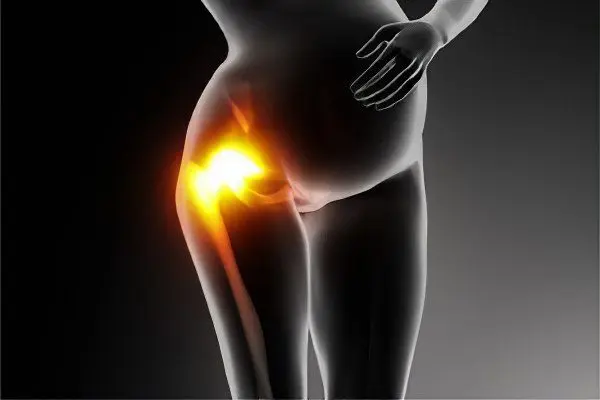
During pregnancy, hip pain can be due to a variety of reasons, including:
Hormonal imbalance. High production of progesterone leads to relaxation of all muscles and ligaments in the body. When it concerns the hip joint, the woman will tire more quickly when walking, which is expressed by aching pains in the thigh.
Weight gain leads to the fact that the hip joints experience excessive stress. Pain in the thigh appears after physical exertion or standing for a long time.
Compression of blood vessels, nerve endings and spinal nerves with a growing uterus provokes the occurrence of pain radiating to the thigh and lower limbs in general.
During pregnancy, the likelihood of exacerbation of any chronic disease increases: arthrosis, osteochondrosis, etc. In addition, it is possible to infringe the sciatic nerve, which also leads to pain in the thigh.
Diagnosis of hip pain
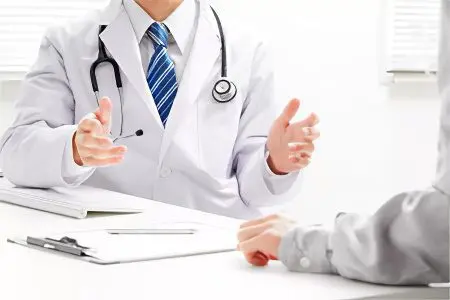
Depending on the cause that provoked pain in the thigh, diagnostic methods differ:
Diseases of the hip joint and femur:
With coxarthrosis, a person will complain of a deterioration in mobility in the hip joint, a crunch is often heard during movement. The affected leg becomes shorter, causing the person to limp. To make a diagnosis, the patient is sent for X-ray, CT, MRI. It is possible to perform a puncture of the hip joint.
With necrosis of the femoral head, a person has the same symptoms as with coxarthrosis. The most informative diagnostic method is CT and/or MRI. These techniques allow diagnosing diseases in the early stages of its development.
With hip dysplasia, the patient has an asymmetry of the folds of the buttocks, while turning the leg, a click is heard. On the affected side, the leg will be shorter, and the joint itself moves with difficulty. To detect pathology, ultrasound, MRI or X-ray examination is performed.
With juvenile epiphyseolysis of the femoral head, the femoral muscle becomes smaller in size due to atrophy of its tissues. The person begins to limp, the mobility of the joint is limited. To detect pathology, it is necessary to perform an x-ray in two projections.
Rheumatoid arthritis, in addition to pain in the hip joint, provokes the occurrence of edema. The affected areas are very swollen. Moreover, similar symptoms are observed not only in one, but in several joints at once. Body temperature rises to 38 °C. In the morning, a person experiences stiffness in the joints, which lasts at least half an hour. In addition, with rheumatoid arthritis, a person complains of inflammation of the heart, kidneys, lungs and other tissues. To detect the disease, the patient is prescribed a general and biochemical blood test, a blood test is performed to detect a rheumatic factor in it. Also, the patient is prescribed a test for antibodies to their own tissues and x-rays of the joints.
If rheumatic fever is suspected, it is necessary to clarify whether the person has recently had a sore throat. The body temperature in this disease rises to high levels, rheumatoid nodules form under the skin, and a rash appears on the dermis. In addition to the joints, other internal organs suffer. To detect pathology, bacteriological examination of mucus from the throat, general and biochemical analysis, ECG are prescribed. The blood is examined for the presence of antibodies to streptococcal infection in it.
Ligamentous and muscle injuries:

Diagnosis of bruises and sprains of the thigh muscles is not difficult, since a person can indicate at what time and when he was injured. In the damaged area, hematomas and bruises are visible. The person limps and complains of pain.
With myositis, it is enough to collect an anamnesis, as well as an external examination of the muscle (it is edematous). During palpation of the muscle, a seal can be detected.
Trochanteritis is manifested by pain in the hip joint and in the thigh. Increased discomfort after motor activity, or in the supine position on the side of the lesion. At the same time, the mobility of the joints is not disturbed, which makes it possible to distinguish the disease from other pathologies.
Diagnosis of diseases of the spine is reduced to performing X-ray, CT or MRI. The pain is localized in the lower back, radiates to the buttocks and thigh, and can spread throughout the leg. Possible violation of the functions of the pelvic organs with frequent urination and deterioration of potency in men.
Diagnosis of vascular pathologies. To make a diagnosis, the patient is prescribed dopplerography of blood vessels, MRI or contrast angiography.
Diagnosis of infectious diseases. The diagnosis is made on the basis of an external examination and symptoms of the disease (fever, general intoxication of the body, increased weakness, the presence of purulent foci and tissue necrosis). Additionally, the patient is prescribed a general blood test, microscopic and bacteriological examination of tissue samples and purulent masses.
Diagnosis of tumor neoplasms is reduced to the analysis of symptoms (increased weakness, subfebrile fever, weight loss). Be sure to prescribe an MRI or CT scan, as well as a histological examination of a sample of the removed tumor.
Diagnosis of retroperitoneal hematoma requires retroperitoneal ultrasound, CT or MRI. Symptoms are determined by the underlying pathology and depend on which particular organ is affected in a person.
Which doctor should I contact for hip pain?
If a person is concerned about pain in the thigh, then you need to establish the cause of its occurrence. When the victim has received a serious injury, such as an open fracture, an ambulance must be called immediately.
In other cases, the help of a traumatologist, neurosurgeon or vascular surgeon, rheumatologist, oncologist, infectious disease specialist, vertebrologist may be required. If a person has doubts about which specialist to go to, then first you need to visit a therapist.
Tips for hip pain
The best option for reducing pain in hip pain is to reduce the load on the hip joint as much as possible. Sharply contraindicated slopes, squats. All household and necessary work is best done with the help of improvised means. For arthritis, arthrosis, coxarthrosis, it is recommended to use a special cane, which can significantly reduce the load on the joints. Moreover, the cane must be carried in the hand opposite to the affected joint.
Treating hip pain

It is important, if possible, to reduce sports loads to a minimum, at least for a while, until the pain disappears. It is advisable to use special ointments that reduce muscle tension. Excellent massage helps, enhanced on the tissues surrounding the joint, but not on the joint itself.
Orthopedic special shoes and, if possible, a functional bed can alleviate the patient’s condition several times. Also, these methods are an excellent prevention of hip pain. Many experts advise to monitor your weight and try to get rid of excess, thereby reducing the load on the joints.
Timely seeking qualified help plays a very important role in successful treatment and prevents the development of irreversible complications.
Medicines are prescribed by a doctor, self-medication is not recommended.










